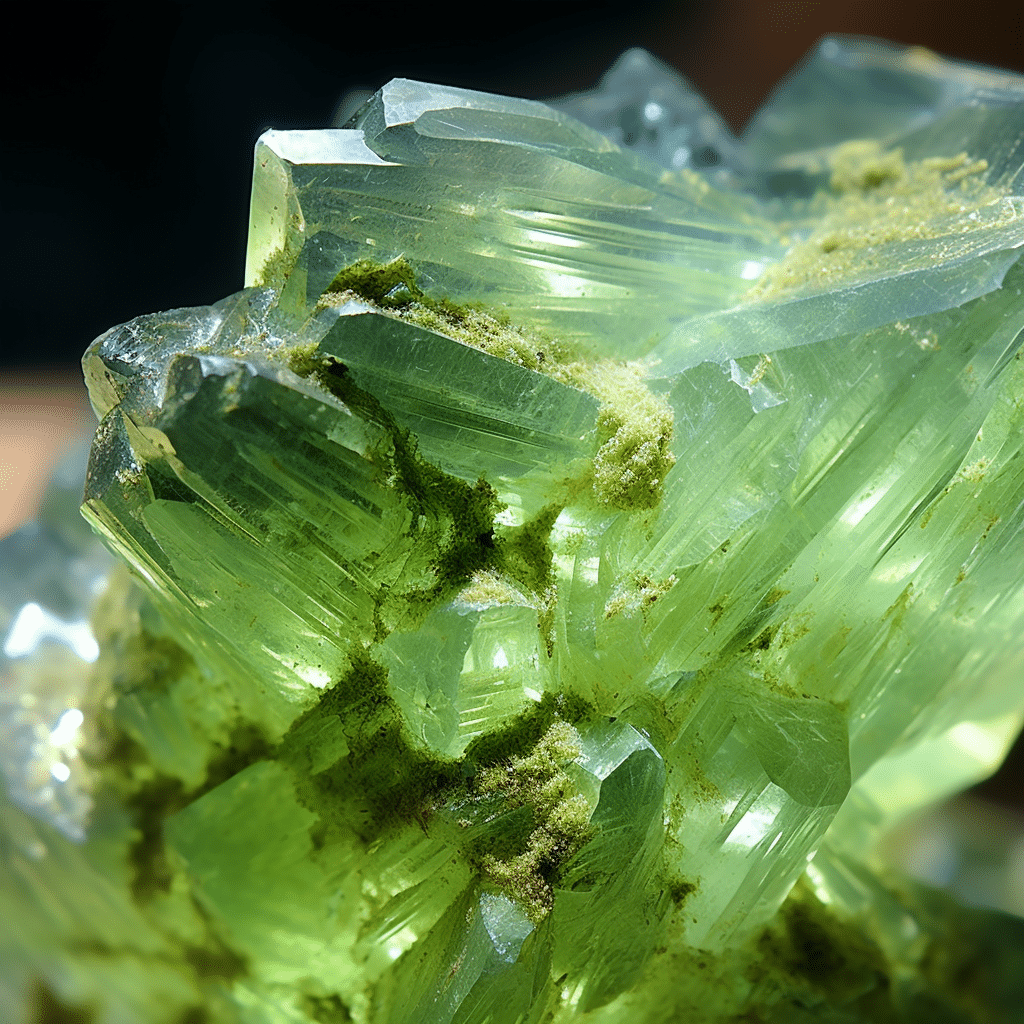Last Updated on October 25, 2023 by admin
Adamite is an enchanting mineral that has captured the attention of many, especially mineral collectors. Characterized by its distinct pale green to yellow-green hue, Adamite possesses an allure that can easily enchant those fortunate enough to encounter it. The mineral’s journey, from its discovery in the deep mines of Mapimi Durango, Mexico, to its coveted status in mineral collections worldwide, is nothing short of captivating.
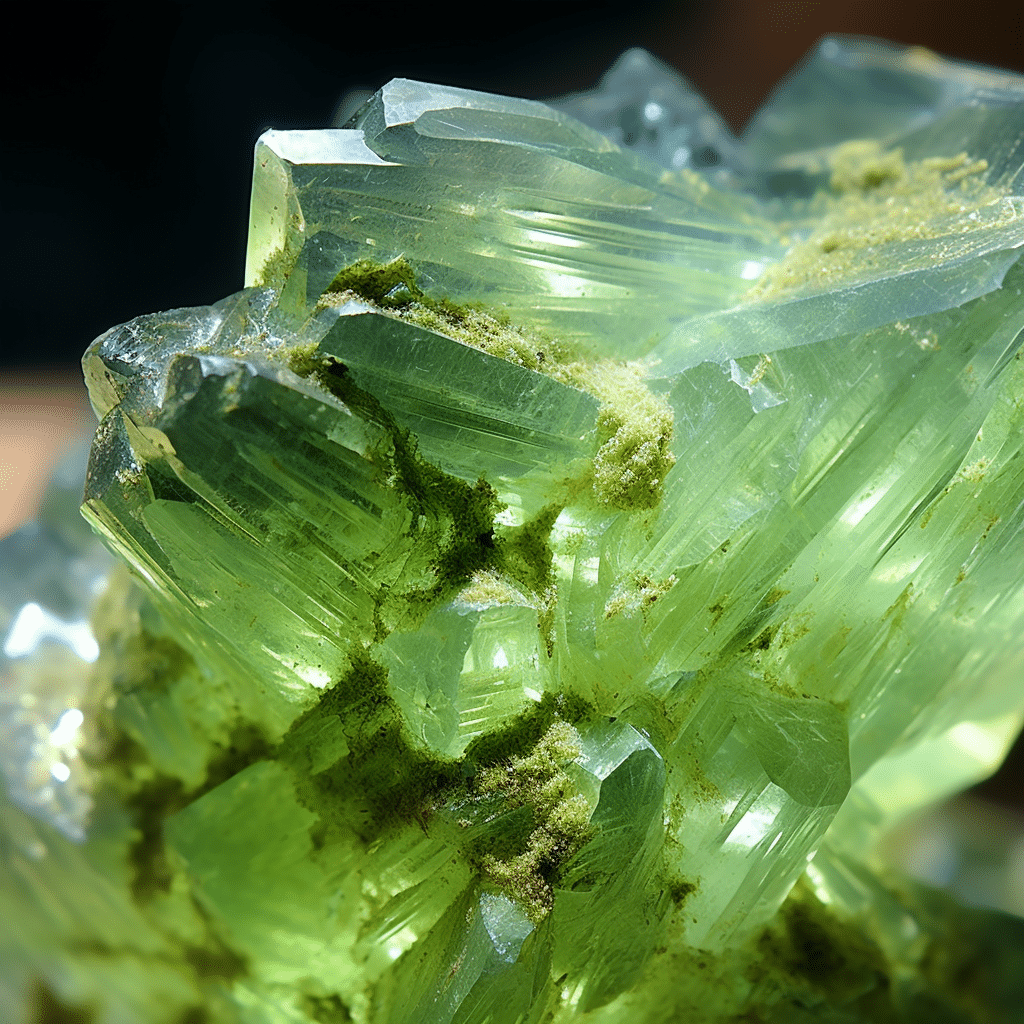
Introduction to Adamite
The mention of Adamite evokes images of delicate, transparent, translucent crystals nestled within the dark caverns of the Ojuela Mine in Mapimi Durango, Mexico, and the Gold Hill Mine in Utah. These prominent localities have yielded some of the most exquisite specimens of this mineral, with colors ranging from lemon yellow to honey yellow, brownish yellow, and even vibrant green shades.
Historically, Adamite owes its name to the French mineralogist Gilbert Joseph Adam, who was credited with procuring the first specimens. While it may be lesser-known than other gemstones in popular culture, Adamite holds a revered status among the community of mineral collectors.
Geological Properties of Adamite
Diving deeper into the geological intricacies, Adamite is essentially a secondary mineral. Its chemical formula, Zn 2(AsO 4)(OH), signifies its elemental zinc arsenate composition. Notably, the presence of arsenate (AsO 4) contributes to the mineral’s distinct characteristics. The adamite crystal system is orthorhombic, meaning its crystals form in elongated, prism-like structures.
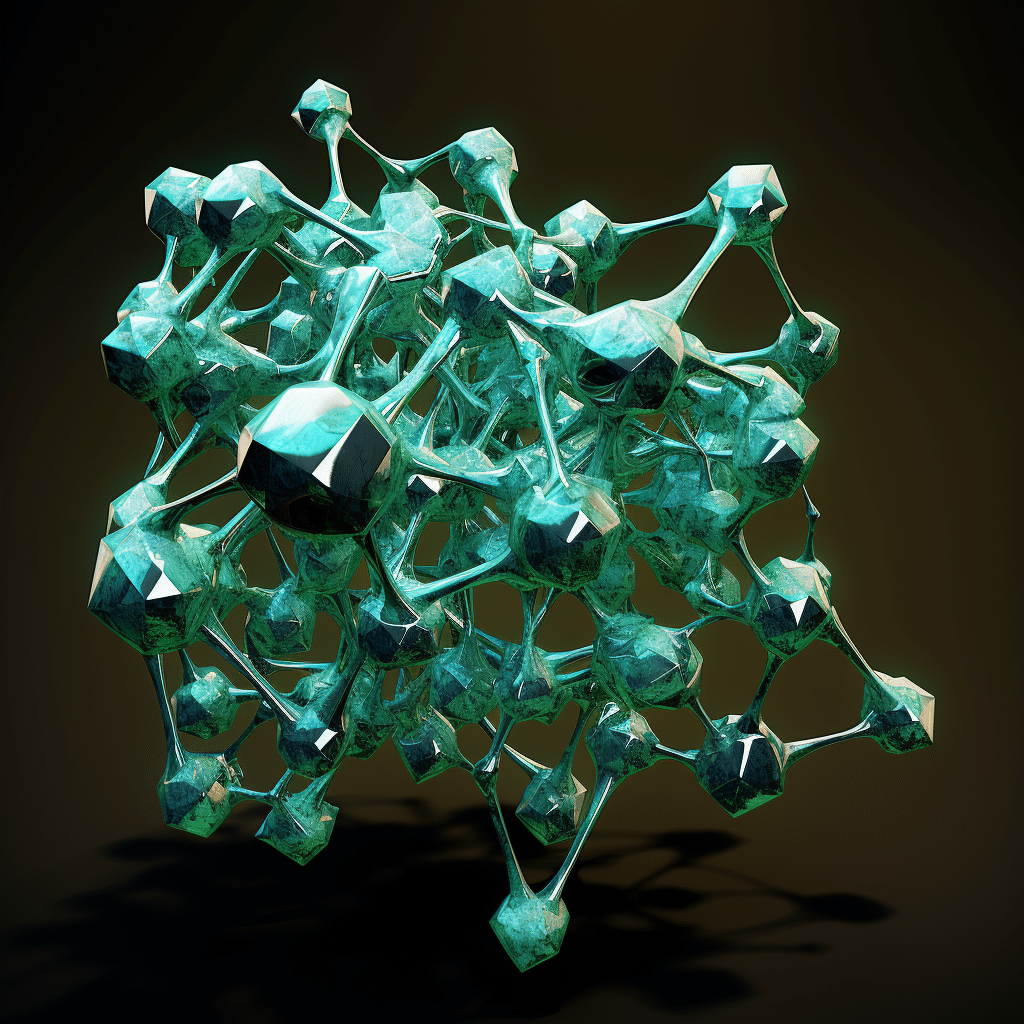
The adamite forms typically as radial aggregates on a limonite matrix. Its color variations owe much to the presence of other elements. For instance, copper’s presence can yield a more greenish hue, known as “cuprian adamite.” Furthermore, when phosphorescing, Adamite can exhibit a mesmerizing lemon-yellow glow.
Reference: société géologique de France https://www.geosoc.fr/
Adamite’s Family and Composition
Delving into its family, Adamite exists as a member of the Arsenate mineral group. This group comprises minerals with similar structures and, quite often, properties. The basic zinc arsenate structure in Adamite can sometimes be replaced by copper arsenate, leading to variations in its color and properties. Additionally, the presence of other elements like cobalt can introduce shades like pink, blue, and violet into adamite crystals.

It’s essential to recognize the diverse range of colors Adamite can exhibit. While pale green and yellow-green are among its most common hues, specimens from localities like Cap Garonne in France and Nevada might display shades of pink, purple, blue, or even reddish.
Its unique appearance, combined with references to its historical significance and the mystique of its discovery localities, has cemented Adamite’s reputation as a must-have for mineral collectors and enthusiasts.
The Healing Aura and properties of this Crystal
Healing Properties of Adamite
From the vibrant mines of Mapimi Durango, Mexico, to the serene spaces of spiritual healers, Adamite’s legacy isn’t just confined to its beautiful colors or its mesmerizing crystalline structures. For many, this mineral is a beacon of healing and well-being.

Adamite has been revered for its ability to imbue the wearer or holder with a sense of vitality and balance. Physically, it’s believed to offer support to the immune system. Whether you’re trying to ward off seasonal ailments or looking for an overall boost in your health, integrating Adamite into your wellness routine can be a beneficial choice.
Emotionally, Adamite is a harbinger of positivity. It can help clear the mind of negative thoughts, making way for enhanced cognitive function. Furthermore, its calming green and yellow hues resonate with feelings of tranquility, aiding in emotional well-being.
Metaphysical Resonance
Beyond the physical realm, Adamite’s significance soars in the metaphysical world. This mineral, especially the pale green varieties sourced from places like Mapimi Durango, Mexico, and the Gold Hill Mine in Utah, is believed to be closely connected to specific energy centers or chakras within the body.
With its radiant energy, Adamite can aid in balancing the heart chakra, fostering feelings of love, compassion, and empathy. Additionally, the vibrant yellow-green Adamite can be instrumental in activating the solar plexus chakra, empowering individuals with confidence and self-worth.
For those on a spiritual journey, Adamite can be a potent tool for growth, meditation, and manifestation practices. Whether you’re trying to connect deeper with your inner self or manifest a specific goal, the vibrational energies of this green crystal can guide and amplify your intentions.

Adamite in Rituals and Spiritual Practices
The legacy of Adamite isn’t just confined to individual well-being. In some cultures and spiritual traditions, Adamite plays a role in rituals and ceremonies. Its connection to the heart and solar plexus chakras makes it a favorite in rituals aimed at fostering love, understanding, and personal power.
The mesmerizing glow of cuprian Adamite, a variant with traces of copper, is particularly sought after in rituals that focus on attracting wealth and prosperity. Similarly, the pink and violet hues, brought about by the presence of elements like cobalt, find their place in ceremonies centered around compassion and spiritual enlightenment.
With its range of colors from the Ojuela Mine, Gold Hill, and other localities, Adamite offers a spectrum of energies suitable for various spiritual and metaphysical pursuits. The key lies in understanding its attributes and harnessing its energies appropriately.
Incorporating Adamite’s Elegance and Energy
Using Adamite in Jewelry and Home Decor
For centuries, Adamite’s shimmering hues have been admired by mineral collectors and used as a statement piece in jewelry. From the white hardness of the delicate lemon yellow to the intense green and the rare violet tinges, Adamite has the ability to capture the essence of nature’s palette.
Craftsmen from Durango, Mexico, to Nevada often incorporate Adamite into earrings, pendants, and even bracelets. Given its specific gravity and delicate structure, it’s an ideal material for pieces that don’t undergo rough wear.
For home decor, the radial aggregates of adamite crystals, especially those sourced from renowned locations like the Ojuela Mine, can be a showstopper. Whether placed on a windowsill where the sun can enhance its translucent beauty or used as a centerpiece on a coffee table, it never fails to capture attention.

Caring for Adamite
Like all cherished possessions, Adamite requires care. Its position on the Mohs hardness scale indicates a level of delicacy. While it’s robust enough for display and to be worn occasionally, rough handling or exposure to harsh chemicals can deteriorate its quality.
Clean your Adamite with lukewarm water and a soft cloth. Avoid commercial jewelry cleaners or abrasive materials. If set in jewelry, ensure it’s stored separately to prevent scratches.
Charging Adamite can be done by placing it in the moonlight. Some believe this enhances its healing and metaphysical properties, rejuvenating its energies.
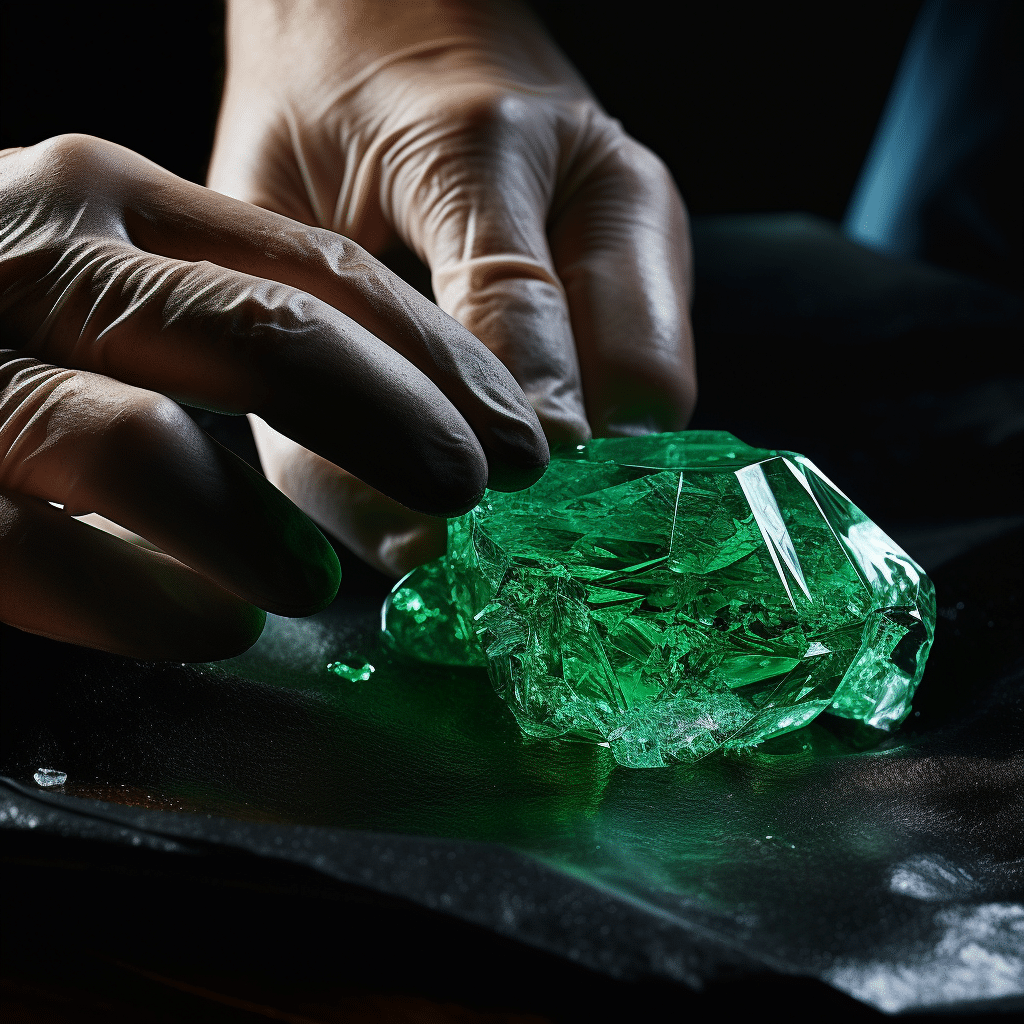
Sensations from Adamite and Potential Side Effects
Individuals sensitive to energies often report a range of sensations when holding or wearing Adamite. Feelings of warmth, tingling, or a gentle pulse are common. These sensations intensify, especially when meditating with Adamite or using it for chakra alignment.
While the majority find these sensations pleasant and invigorating, he notes that a few might feel overwhelmed, especially if they’re new to crystal energies. It’s always advisable to start with short durations and gradually increase your time with the mineral.
Remember, while Adamite’s healing and metaphysical attributes are celebrated by many, it’s essential to approach any crystal with an open mind and heart. Use them as a complement, not a replacement, for traditional treatments.

What is the sin of the Adamites?
The term “Adamites” has an interesting historical context separate from the mineral itself. Historically, the Adamites were a sect that emerged during the early Christian period. They believed in recreating the innocence of Adam and Eve, which led them to reject clothing during their rituals, symbolizing a return to Eden’s state of purity. Their practices were often misunderstood and criticized, leading some to term their nudity as the “sin of the Adamites.” It’s essential to distinguish this historical reference from the mineral, as they are unrelated.
How rare is Adamite?
Adamite, particularly in its pristine form, is a treasure for mineral collectors. While it occurs in various locations globally, top-quality specimens, especially those with unique colors like blue or pink, are considered rare. For example, the Ojuela Mine in Mapimi, Durango, Mexico, has produced some of the most exquisite adamite specimens. However, not all adamite crystals are considered rare, and their value often depends on their clarity, color, and origin.

What are the uses?
Beyond its aesthetic appeal in jewelry and home decor, Adamite is highly valued for its metaphysical properties. Many believe in its ability to promote emotional well-being, enhance cognitive function, and align energy chakras. While its primary use is in the realm of healing or spirituality, it’s also a prized possession for mineral collectors. Some industries explore this crystal (mineral) and similar minerals for their chemical composition, though such uses are less common.
What did they believe?
While this question again pertains to the historical sect and not the mineral, it’s worth noting the Adamites’ core belief revolved around returning to the innocence of the first humans, Adam and Eve. They aimed to reject societal norms and materialistic desires, pursuing a pure, unencumbered connection with the divine. Their practices, however esoteric, were rooted in a profound desire for spiritual enlightenment and connection.

Concluding Thoughts: The Allure and Significance of Adamite
Adamite’s stunning spectrum from pale green to lemon yellow and rare shades of pink and blue is undeniably a gem of the natural world. Its beauty, combined with its profound metaphysical properties, places it in a unique realm. Whether you’re a mineral collector, a spiritual seeker, or someone who appreciates nature’s artistry, Adamite offers a blend of aesthetics and energy like no other.
Its ties to revered locations such as Gold Hill Mine and the significance of its discovery in places like Mapimi, Durango, Mexico make it a mineral and a piece of Earth’s story. As we wrap up this exploration, we’re reminded of the allure of nature and the mysteries it holds. Adamite, in its radiant splendor, is a testament to that wonder.
FAQ
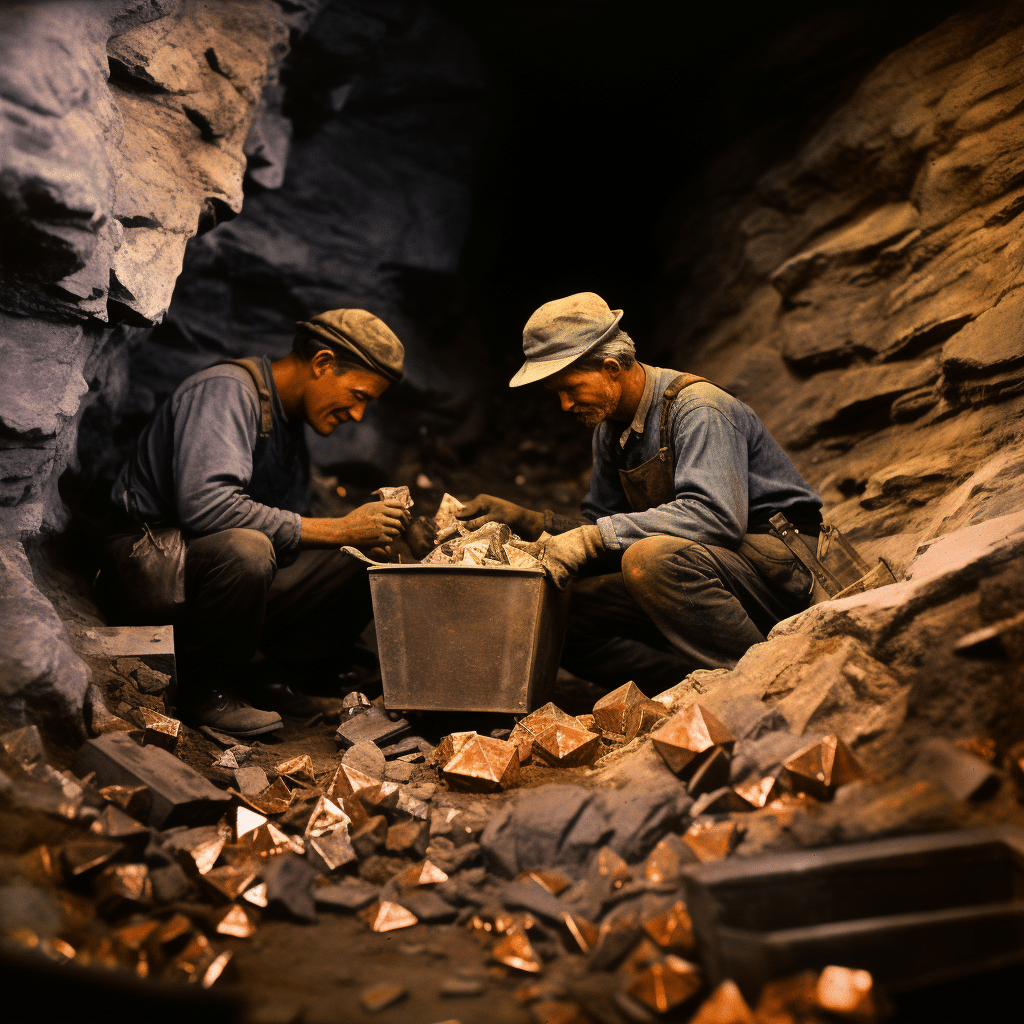
Is Adamite A Unique Secondary Mineral?
Adamite, a secondary mineral, is a fascinating member of the world of minerals. Identified by its unique chemical formula Zn2(AsO4)(OH), Adamite is known for its distinctive green color and its ability to phosphoresce lemon yellow under UV light. This intriguing mineral has existed for hundreds of years, captivating the attention of gem collectors and mineralogists alike. Its discovery and identification were officially approved and documented in a well-respected mineralogical magazine, further cementing its place in the mineral kingdom.
The Occurrence and Distribution: From Greece to California
Adamite is a global occurrence, but its most significant deposits are found in Greece and California. In Greece, Adamite is supplied from the Lavrion District Mines, a region rich in diverse minerals. This area is particularly known for producing Adamite specimens with a vibrant green color, making these specimens highly sought after by collectors.
On the other side of the world, in California, the Ojuela Mine is another significant source of Adamite. Here, the mineral exists in spectacular drusy crusts and well-formed crystals, often exhibiting that characteristic phosphorescence. The global distribution of Adamite makes it a truly international mineral, appreciated by enthusiasts and professionals worldwide.
What is the Significance of Mineralogy
With its unique chemical formula Zn 2(AsO 4)(OH), Adamite plays a significant role in mineralogy. Its green color and ability to phosphoresce lemon yellow offer a fascinating study of mineral properties. The mineral’s occurrence in various regions, from Greece to California, allows researchers to study its formation under different geological conditions.
Furthermore, Adamite’s identification and approval in a notable mineralogical magazine have contributed to its recognition and study within the scientific community. This secondary mineral’s unique properties, coupled with the fact that it has existed for centuries, continue to make it an intriguing subject in mineralogy.

